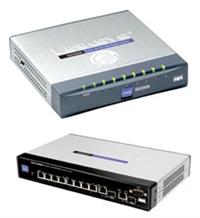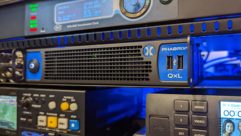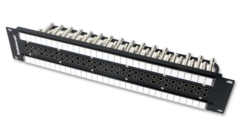

Test Your Knowledge of IP Networks
True or false: A managed switch is a plug-and-play network switch with no configuration interfaces or options to worry about. Don’t know? Try the next question.
True or False
1. A managed switch is a plug-and-play network switch with no configuration interfaces or options to worry about.
2. Tunneling can help get information from point A to point B when the pathway is incompatible or insecure (or very secure).
3. Internet Protocol version 6 is the successor to Internet Protocol version 5.
Answers
One of these 8-port switches is managed. The other is not. Extra credit if you can spot the managed switch.
1. FALSE. A managed switch is in fact highly configurable. You can use a command line interface, Simple Network Management Protocol agent, or even a Web browser to configure the switch–locally or remotely. Managed switches are important in a converged AV/IP infrastructure because they allow varying levels of control, including setting bandwidth limits, setting ports as high priority, and creating virtual LANs.
2. TRUE. Tunneling is most notably used to create virtual private networks, which are secure wide area networks that often traverse the public Internet. In tunneling, the payload (data, multimedia, etc.) is encapsulated in another protocol that the delivery network understands. Tunneling might be used to move information over incompatible networks or keep it secure over an untrusted network. Or, tunneling can be used to navigate firewalls. Video servers often use tunneling to stream video through firewalls to reach desired end points.
3. FALSE. There was no actual IPv5. It was part of an experimental stream protocol that never got off the ground. When it came time for a new IP, the Internet Engineering Task Force just skipped to v6. Most of today’s IP networks still run IPv4. The Federal government, however, is under a mandate to switch over to IPv6. The new protocol, among other things, supports a much larger address space, meaning more things (computers, AV devices, RFID tags, etc.) can have IP addresses. It also promises better security, easier routing, and inherent support for multicasting (think digital signage, AV distribution, and more).










